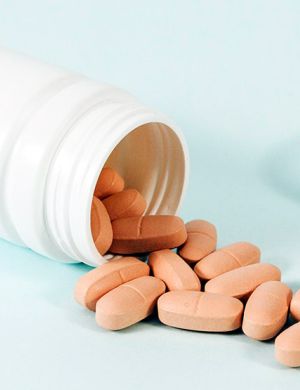
Medical Devices-Asia and ROW Regulatory News-Oct. 2023
ASIA
INDIA
The Indian Regulatory Authority (CDSCO) has released List of medical devices testing laboratory (MDTL) for carry out test or evaluation of medical device on behalf of manufacturer registered with CDSCO under MDR 2017.
The guidance explains about registered Medical Device Testing Laboratories (MDTL) to carry out test or evaluation of a medical device on behalf of the manufacturer (Form MD-40) under Medical Devices Rules, 2017.
The updated list of Medical Devices Testing Laboratories registered with CDSCO under the provisions of Medical Devices Rules, 2017 to carry out test or evaluation of a medical device on behalf of manufacturer. evaluation of a medical device on behalf of manufacturer as on date 12.09.2023
CDSCO has released the Regulation of all Class C & D Medical Devices Under Licensing regime, w.e,f 01.10.2023 as per G.S.R 102E dated 11.02.2020
In order to regulate all the medical devices, MoHFW has published G.S.R. 102 (E) dated 11.02.2020 for regulation of such devices in phase wise manner. As per the said notification the Class C & D medical devices will be under licensing regime from 01.10.2023. In the meantime, representations from various Associations and Stakeholders have been received by this office, requesting that the business continuity should not be disrupted due to the implementation of licensing regime w.e.f. 01.10.2023 for Class C & D medical devices.
In view of the above, it has been decided that, in case, if an existing importer/ manufacturer who is already importing/ manufacturing any of the above said Class C or Class D Medical Devices, has submitted application to Central Licensing Authority, for grant of import /manufacturing licence in respect of the said device(s) under the provisions of Medical Devices Rules, 2017, the said application shall be deemed valid and the importer/manufacturer can continue to import/manufacture the said device(s) up to six months from the date of issue of this order or till the time, the Central Licensing Authority, takes a decision on the said application, whichever is earlier.
CDSCO has given Clarification on the Circular no. 29/Misc/03/2023-DC(344) Regulation of all Class C & D Medical Devices Under Licensing regime, w.e,f 01.10.2023 as per G.S.R 102E dated 11.02.2020 regarding
In this notice the CDSCO has given clarification on the circular no 29 that it is applicable to the manufacturers/importers who have already filed the application to central licensing authority on or before 30th September 2023.
CHINA
The China Regulatory Authority (NMPA) has released draft notice on the public solicitation of opinions on five medical device registration review guiding principles and key technical review points including the “Guiding Principles for Registration Review of Corneal Topographers
The guideline applies to devices that use the working principle of optical imaging/measurement to obtain the shape of the cornea surface through non-contact methods. According to the 2017 version of the “Medical Device Classification Catalog”, this type of equipment is managed as Class II medical devices, covering applicable products with a classification code of 16-04-12. Other medical devices that use optical principles to obtain the shape of the corneal surface may refer to the applicable sections of this guideline.
The guideline is applicable to the design and implementation of animal experiments on porous laparoscopic surgery systems. It is intended to guide registered applicants to scientifically conduct animal experimental research on surgical robots. It is not applicable to experiments on non-living animals, isolated tissues or organs.
This review point applies to the product registration of laser treatment products for myopia/amblyopia that irradiate the fundus through the pupil. According to the current “Medical Device Classification Catalog”, the classification code of this type of product is 16-05-02, and the management category is Category III.
The China Regulatory Authority (NMPA) has issued draft notice on the public solicitation of opinions on the “Guiding Principles for Registration Review of Real-World Research Design and Statistical Analysis of Medical Devices
This guiding principle applies to real-world research on medical devices and does not apply to real-world research on in vitro diagnostic reagents managed as medical devices. This guideline is based on the “Technical Guiding Principles for the Clinical Evaluation of Medical Devices with Real-World Data (Trial)” (hereinafter referred to as the “General Principles”) and combined with the current accumulated experience to further refine the real-world research design and statistical analysis of medical devices. general requirements. At the current stage of development, real-world evidence in the clinical evaluation of medical devices is mainly used as a supplement to existing clinical evidence and cannot replace the existing clinical evaluation path.
The General Affairs Department of the State Food and Drug Administration publicly solicits opinions on the draft “Notice on Further Strengthening the Relevant Work on the Classification of Medical Device Products”
In order to strengthen the classification management of medical devices, further standardize the requirements for defining the classification of medical device products, and optimize the work procedures for defining the classification of medical device products, in accordance with the “Regulations on the Supervision and Administration of Medical Devices” (hereinafter referred to as the “Regulations”) and the “Measures for the Administration of Registration and Filing of Medical Devices” “Registration and Filing Management Measures for In Vitro Diagnostic Reagents” (hereinafter collectively referred to as the “Measures”) and other relevant requirements.
The China Regulatory Authority (NMPA) has issued Notice from the Device Review Center of the State Food and Drug Administration on the release of key points for the functional review of artificial intelligence software for magnetic resonance imaging systems (No. 36, 2023).
The review point mentioned in the notice applies to magnetic resonance (MR) imaging systems using artificial intelligence (AI) technology. According to the currently effective “Medical Device Classification Catalog”, the classification code of this type of product is 06-09, and the management category is Class III.
The AI software functions referred to in this review point must run on the MR system and be registered with the MR system as a software component. Some AI software functions are presented in the form of dedicated independent software that runs on the general computing platform (workstation, etc.) of the MR system. If it is registered with the MR system as an accessory, it can be regarded as a software component of the MR system.
NMPA released Draft guidance for comments on the “guiding principles for registration review of human factors design of medical devices”
This principle applies to the registration application for human factors design of Class II and III medical devices, but does not apply to in vitro diagnostic reagents. Registration applicants may refer to this guiding principle to carry out human factors design work for all medical devices. This document for registration applicants, reviewers and inspectors. It does not involve administrative approval matters, nor is it enforced as a regulation.
It is a general guiding principle for the human factors design of medical devices. Other medical device guiding principles can be adjusted, modified and improved based on this guiding principle and in conjunction with specific circumstances.
NMPA released Draft guidance for comments on four medical device registration review guidelines including the “Registration Review Guidelines for Disposable Sterile Side-Hole Blunt Needles”.
The Side-hole blunt needle is a special injection needle with a blunt tip and an opening on the side. Its function is to inject gel-like fillers (such as sodium hyaluronate gel for injection, etc.) into specific parts of the skin and soft tissue. Products should be sterile and individually packaged for single use. Side-hole blunt needles often need to be used in conjunction with skin-breaking needles to pierce the skin or mucous membranes.
The absorbable hemostatic products applicable to this guideline refer to medical device products that can be absorbed by the human body and placed in the human body during surgery when conventional hemostatic techniques are ineffective. Such products can accelerate the coagulation process of local blood in the wound.
The α-cyanoacrylate medical adhesive products involved in this guideline refer to n-butyl α-cyanoacrylate, n-octyl α-cyanoacrylate and other substituted esters or isomers as the main components, a medical adhesive made alone and/or compounded with modifiers and excipients, and also includes instruments and tools used in conjunction with the adhesive.
This applies to absorbable anti-adhesive products for abdominal and pelvic surgery. It also includes the equipment and tools used with the product (if any).
SINGAPORE
Gl-06-r2 medical devices product classification guide
The Health Sciences Authority (HAS) Has released the revised guidance document namely medical device product classification guide. The purpose is to aid with classification of some of the most challenging products.
- The intended purpose of the product taking into account the way the product is designed and/or presented. If the intended purpose fits the MD definition in the First Schedule of Health Products Act (HPA), then it would be subject to control as a medical device in Singapore.
- The primary mode of action by which the intended purpose is achieved.
For a medical device, the primary mode of action by which the intended purpose is typically achieved is by physical means (including mechanical action, replacement of, or support of the anatomy or of a physiological process).
ROW
BRAZIL
The Brazil Regulatory Authority (ANVISA) published new topics for SaMD software regularization
With the publication of Collegiate Board Resolution (RDC) 657/2022, ANVISA established the requirements for the regularization of software as a medical device (SaMD, Software as a Medical Device) and made the following matters available via petition:
- 80272 EQUIPMENT – Class I and II Medical Software Notification
- 80273 EQUIPMENT – Medical Software Family Registration
- 80274 EQUIPMENT – Medical Software Registration
Considering the provisions of rt. 3rd of RDC 657/2022, in situations where software with medical applications are considered accessories for the exclusive use of medical devices, they must be regularized in the same process. The topics on in vitro diagnostic products were made available in the Solicita system.
- 80298 IVD – Class II product notification with non-embedded software (SaMD) for dedicated use
- 80299 IVD – Product registration with non-embedded software (SaMD) for dedicated use
Petitions 8444 – IVD – Change of registration – Approval required – Information from the technical product dossier or 80198 IVD – Change of notification – Immediate implementation, accompanied by the IVD accessory Software Information Form (SaMD) (available on Solicita in the respective subjects) should be used in the following situations:
- To include software (SaMD) for dedicated use as an accessory in IVD product processes.
- To change the version (new indications and functionalities) of software (SaMD) for dedicated use that is regulated as an accessory in IVD product processes.
SaMD type software that is already regularized will not be impacted. In other words, the information provided to ANVISA will be preserved, regardless of whether they are regulated as medical devices or accessories for exclusive use.
AUSTRALA
Regulation of software based medical devices
The purpose of this guidance is to help manufacturers and sponsors understand how the TGA interprets requirements, and thus indicate how manufacturers and sponsors can comply.
This is a guide only, and manufacturers and sponsors are encouraged to familiarize themselves with the legislative and regulatory requirements in Australia, and if necessary, to seek professional advice. It is the responsibility of each manufacturer or sponsor to understand and comply with these requirements.
Software is becoming increasingly important in medical devices and digital adoption more broadly. In addition, it is becoming more important as a medical device in its own right.
Rapid innovation in technology has driven significant changes to software function and adoption, giving rise to a larger number of devices able to inform, drive or replace clinical decisions, or directly provide therapy to an individual. Advances in computing technology and software production have led to a large increase in the number of software-based medical devices available on the market, requiring the implementation of reforms to ensure patient safety.
SAUDI ARABIA
The Saudi Health Authority (SFDA) has released Guidance on Requirements for Quality Assurance Programs for Radiation Emitting and Imaging Devices (MDS-G15)
Radiation emitting and imaging devices are one of the most effective methods for examining and diagnosing different health conditions. Since radiation emitting and imaging devices depend entirely on the X-rays production, there are potential health risks associated with using such devices. In order to maintain a high-quality image and keep the radiation dose to the minimum, healthcare providers are required to obligate to national and international requirements for quality assurance programs for radiation emitting and imaging devices.
The purpose of this Guidance is to specify and clarify the requirements for quality assurance programs for radiation emitting and imaging devices including mammography.
The Guidance applies to all for radiation emitting and imaging devices including mammography used inside healthcare facilities located in KSA.
Guidance on Manufacturing Paths of Medical Devices
SFDA (Saudi Food & Drug Authority) has issued guidance document on Manufacturing Paths of Medical Devices includes requirements of manufacturing Circulation and Distribution, Manufacturing Paths, Free Sale Certificate, Importing for the Purpose of Local Manufacturing.
The purpose is to clarify paths of manufacturing medical devices locally (including the transfer of its technology and its settlement in the KSA), its circulation, distribution within the KSA and exportation, in addition to guide manufacturers to the SFDA requirements published on its website.
Don’t miss out! Click here to stay in touch.
Categories
- Biopharma (47)
- Consumer Health (15)
- Cosmetics (8)
- Diagnostics (5)
- Digital Health (8)
- Food (2)
- Medical Device (100)
- OTC (3)
- Regulatory Intelligence (5)
- Standards (40)
Recent Blogs
Get the latest updates from Vistaar

Related Posts
CONNECT WITH US

Let's talk about how DDi can help you







